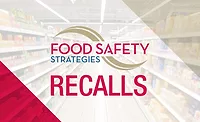UK's FSA Revises Guidance on Controlling E. coli O157 Cross-Contamination
The UK's Food Standards Agency (FSA) announced last week that it has revised and updated its guidance on E. coli O157 control of cross-contamination, taking into account the results from independent research into the effectiveness of disinfecting complex equipment, as well as the views of industry and local authority stakeholders. FSA officials said the aim of the guidance is to ensure that businesses manage the risk to consumer health from the presence of E. coli in food.
The revised guidance will be published for an eight-week review period, allowing businesses and others to provide comments on the revised guidance, according to the FSA.
The FSA announcement further explained:
The revised guidance is provides greater flexibility for businesses on how they can manage food safety risks, subject to their assessment of the particular risks relating to their business and subsequent assessment by the relevant local authority.
The layout of the revised guidance now follows that commonly used in industry guides which will make it easier for businesses to follow and distinguish between legal requirements, FSA guidance on compliance and good practice.
Along with the revised guidance, the FSA is also publishing the Campden BRI report on the testing of food businesses’ proposed alternative controls to complete separation of complex equipment. Findings from this independent research and stakeholder discussions have been incorporated in the revised guidance.
The revised guidance clarifies that:
-
Businesses do not need to have separate areas for handling raw and ready to eat foods (RTE) where they can demonstrate that separation by time with effective cleaning and disinfection will manage the risk of cross-contamination.
-
Less complex equipment, such as temperature probes, mixers and weighing scales, may be used for both raw and RTE foods subject to the business being able to demonstrate that such equipment will be effectively cleaned and disinfected between uses.
-
It may now be possible to effectively clean and disinfect vacuum packers, slicers and mincers between uses as long as such machines are completely dismantled to allow all surfaces to be thoroughly cleaned. In practice, however, it is unlikely to be practical for a business to regularly change the use of vacuum packers as a competent engineer would need to undertake what is a complicated dismantling and reassembling process. However, cleaning to allow a more permanent change of use, for example to re-commission and buy and sell second-hand vacuum packers, may be feasible. In the case of slicers and mincers, dismantling, cleaning and disinfecting may be more straightforward but is unlikely to be feasible during normal business operations. Businesses wishing to use such machines for raw and RTE foods would need to fully assess the risks and to demonstrate to the relevant local authority that cleaning between uses will provide effective controls.
Looking for quick answers on food safety topics?
Try Ask FSM, our new smart AI search tool.
Ask FSM →







